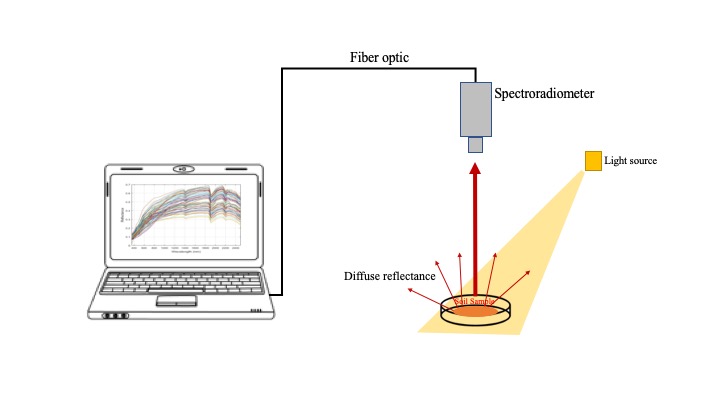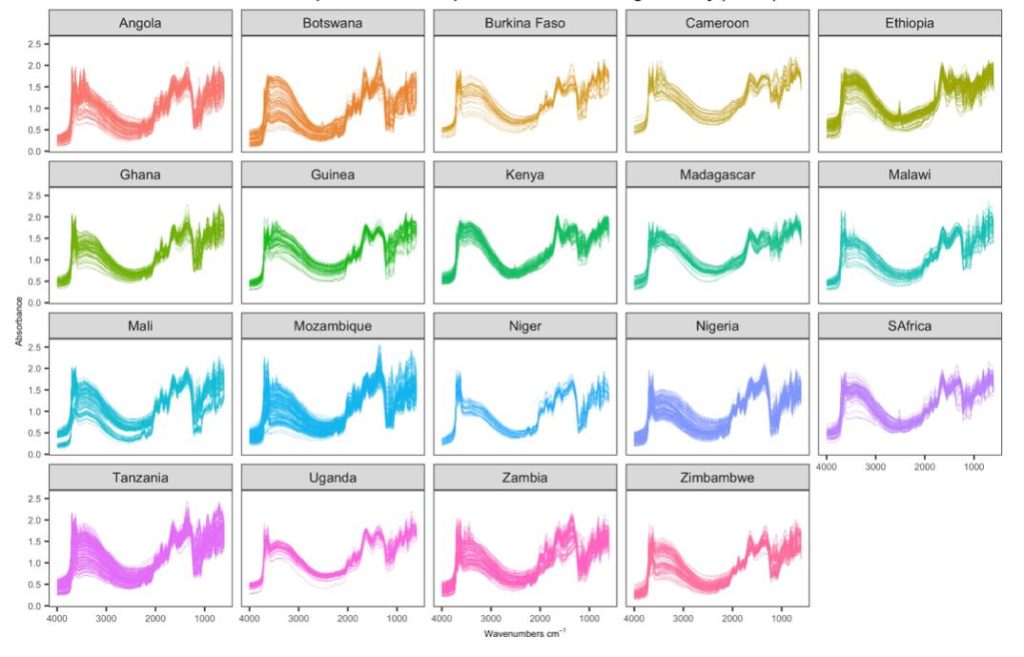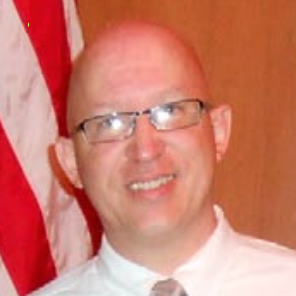Conventional procedures to determine soil characteristics are time and labor intensive, typically involving multiple processing, extraction and analysis steps. Soil spectroscopy offers a safe and rapid alternative (Figure 1).

Soil spectroscopy is the measurement of light absorption when light in the visible, near infrared or mid infrared (Vis–NIR–MIR) regions of the electromagnetic spectrum is applied to a soil surface. The proportion of the incident radiation reflected by soil is sensed through Vis–NIR–MIR reflectance spectroscopy. These characteristic spectra (Figure 2) can then be used to estimate numerous soil attributes including: minerals, organic compounds and water.

Over the last three decades, soil spectroscopy has proven to be a cost- and time-effective, reproducible, nondestructive, and environmental-friendly technique that can be a viable alternative to conventional soil analysis methods. The technique has mainly been used in the laboratory; however, its application in-situ, from air, and from spaceborne sensors is also increasing. Nonetheless there remain challenges, Vis–NIR–MIR spectra include weak, wide, and overlapping absorption bands, which makes identifying specific soil parameters challenging.
Developing a robust connection between spectral patterns and soil properties requires data, a lot of it, to train various machine learning algorithms. This presents a significant barrier to uptake of this technology. We believe that both the data and these trained models for soil spectroscopy data analysis need to be free, transparent and easy to access to users around the world. Open source data and algorithms will serve transparency, reproducibility, and inform better management decisions. Bringing together these open datasets and algorithms is a main aim of the Soil Spectroscopy for the Global Good (SoilSpec4GG) project. SoilSpec4GG will enable soil scientists and stakeholders to apply Vis–NIR–MIR reflectance spectroscopy as a mature technique for routine soil analysis.
SENIOR SCIENTIST AT WOODWELL CLIMATE
Jonathan’s work focuses on the role that soils can play in climate mitigation and sustainable food production. Increasing the availability of soil data is a key piece of this work.
ASSISTANT PROFESSOR AT THE UNIVERSITY OF FLORIDA
Katherine is a computational biogeochemist who uses mathematics and computers to understand how soil breathes.
CEO OPENGEOHUB
Tom is the Co-founder of OpenGeoHub foundation and Technical Director. In the SoilSpec4GG project Tom leads development of the OSSL DB, R packages and web-services.
RESEARCH SCIENTIST
José works to improve our understanding of soils and agricultural systems in order to contribute to food security and sustainable development. He works on soil spectroscopy projects and others related to soil and agricultural monitoring.

Rich Ferguson
USDA NATURAL RESOURCES CONSERVATION SERVICE NATIONAL SOIL SURVEY CENTER – LABORATORY / KELLOGG SOIL SURVEY LABORATORY